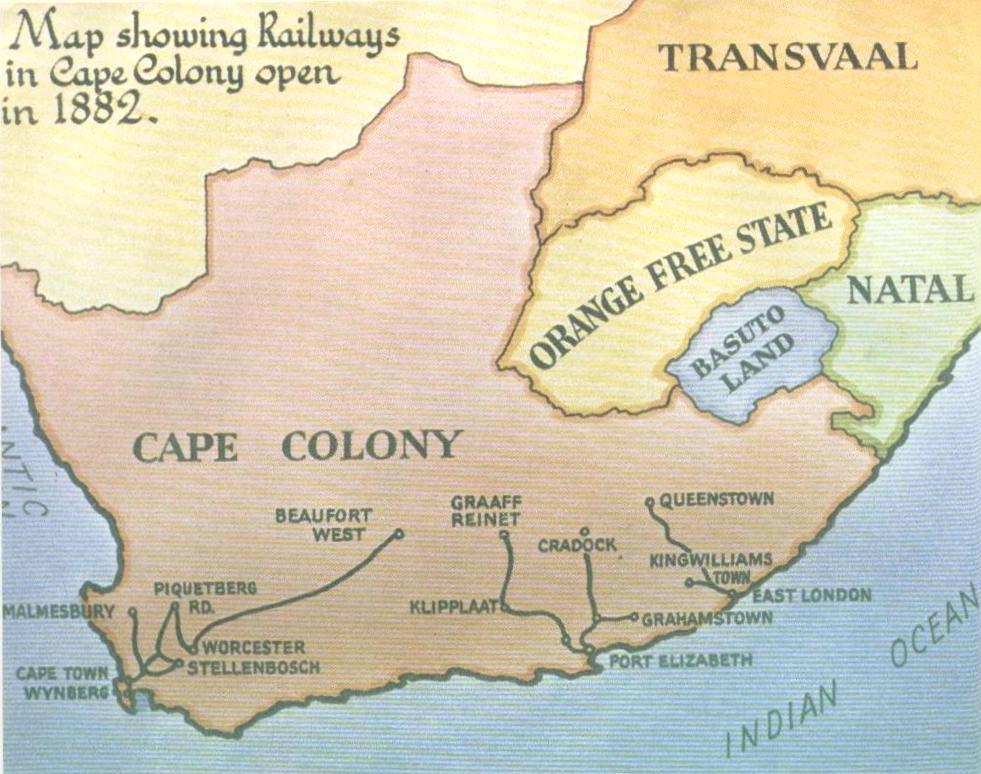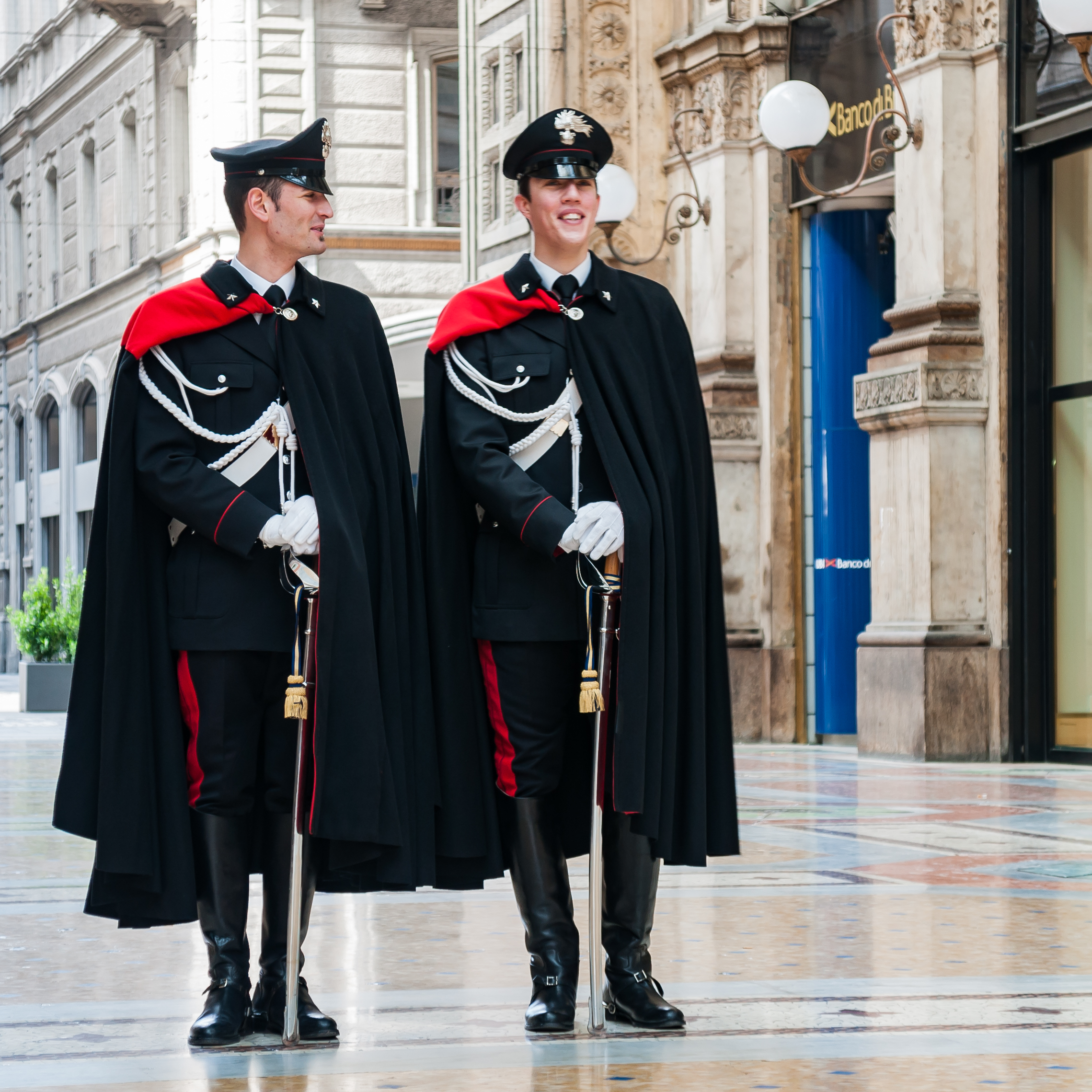|
CGR 1st Class 4-4-0TT
The Cape Government Railways 1st Class of 1881 was a South African steam locomotive from the pre-Union era in the Cape of Good Hope. In 1881, the Cape Government Railways placed six more 1st Class tank-and-tender locomotives with a American type wheel arrangement in service on the Midland System. These engines were built as tender locomotives, without on-board coal bunkers and with permanently attached coal and water tenders. Manufacturer Six side-tank-and-tender passenger locomotives were built for the Cape Government Railways (CGR) by Neilson and Company in 1881, numbered in the range from M44 to M49 in the Midland System's number range. They were built to the same specifications as the eleven 1st Class locomotives of 1875, but without the onboard coal bunker and with the plate frame shortened accordingly. Instead, they were equipped with permanently attached six-wheeled tenders with an estimated capacity of water and coal.Espitalier, T.J.; Day, W.A.J. (1943). ''The Lo ... [...More Info...] [...Related Items...] OR: [Wikipedia] [Google] [Baidu] |
Robert Stephenson And Company
Robert Stephenson and Company was a locomotive manufacturing company founded in 1823 in Forth Street, Newcastle upon Tyne in England. It was the first company in the world created specifically to build railway engines. Famous early locomotives were ''Locomotion'' No. 1 and ''Rocket''. By 1899, 3,000 locomotives had been built at the Forth Street site, and a new company was formed, Robert Stephenson and Company Limited, and the Darlington works was opened. In 1937, the company merged with Hawthorn Leslie to form Robert Stephenson and Hawthorns. In 1944, they became part of English Electric. Foundation and early success The company was set up in 1823 in Forth Street, Newcastle upon Tyne in England by George Stephenson, his son Robert, with Edward Pease and Thomas Richardson. The manager of the works between 1824 and 1825 was James Kennedy. The company's first engine was '' Locomotion No 1'', which opened the Stockton and Darlington Railway, followed by three more: ''H ... [...More Info...] [...Related Items...] OR: [Wikipedia] [Google] [Baidu] |
Cradock, Eastern Cape
Cradock is a town in the Eastern Cape Province of South Africa, in the upper valley of the Great Fish River, by road northeast of Port Elizabeth. The town is the administrative seat of the Inxuba Yethemba Local Municipality in the Chris Hani District of the Eastern Cape. The town is named after John Cradock, governor of the Cape Colony and commander of the forces. Pre-colonial history For thousands of years San hunter-gatherers were the sole human inhabitants of southern Africa. About 2000 years BP the semi-nomadic Khoikhoi (or Khoekhoen or Khoikhoin) arrived with cattle, sheep and goats. These pastoralists migrated south towards the coast. Rock paintings and petroglyphs (engravings) remain as evidence of the first people who lived here. By the 4th century AD Bantu-speaking people had begun to migrate from central Africa down the east coast into southern Africa. The amaXhosa pressed further south to the banks of the Great Fish River where they met San hunter-gatherer ... [...More Info...] [...Related Items...] OR: [Wikipedia] [Google] [Baidu] |
Railway Locomotives Introduced In 1881
Rail transport (also known as train transport) is a means of transport that transfers passengers and goods on wheeled vehicles running on rails, which are incorporated in tracks. In contrast to road transport, where the vehicles run on a prepared flat surface, rail vehicles (rolling stock) are directionally guided by the tracks on which they run. Tracks usually consist of steel rails, installed on sleepers (ties) set in ballast, on which the rolling stock, usually fitted with metal wheels, moves. Other variations are also possible, such as "slab track", in which the rails are fastened to a concrete foundation resting on a prepared subsurface. Rolling stock in a rail transport system generally encounters lower frictional resistance than rubber-tyred road vehicles, so passenger and freight cars (carriages and wagons) can be coupled into longer trains. The operation is carried out by a railway company, providing transport between train stations or freight customer facilit ... [...More Info...] [...Related Items...] OR: [Wikipedia] [Google] [Baidu] |
Cape Gauge Railway Locomotives
A cape is a clothing accessory or a sleeveless outer garment which drapes the wearer's back, arms, and chest, and connects at the neck. History Capes were common in medieval Europe, especially when combined with a hood in the chaperon. They have had periodic returns to fashion - for example, in nineteenth-century Europe. Roman Catholic clergy wear a type of cape known as a ferraiolo, which is worn for formal events outside a ritualistic context. The cope is a liturgical vestment in the form of a cape. Capes are often highly decorated with elaborate embroidery. Capes remain in regular use as rainwear in various military units and police forces, in France for example. A gas cape was a voluminous military garment designed to give rain protection to someone wearing the bulky gas masks used in twentieth-century wars. Rich noblemen and elite warriors of the Aztec Empire would wear a tilmàtli; a Mesoamerican cloak/cape used as a symbol of their upper status. Cloth and clothin ... [...More Info...] [...Related Items...] OR: [Wikipedia] [Google] [Baidu] |
Neilson Locomotives
Neilson may refer to: Places * Zec Batiscan-Neilson, in the Portneuf Regional County Municipality, Quebec, Canada * Neilson Township, in Portneuf Regional County Municipality, Quebec, Canada * Neilson River (Bras du Nord), Saint-Raymond, Portneuf Regional County Municipality, Quebec, Canada Business * Neilson Dairy, or William Neilson Dairy Limited, a Canadian dairy company * Neilson and Company, 19th century locomotive manufacturer in Glasgow, Scotland Other uses * Neilson (name), people with the given name or surname * Roger Neilson Memorial Award, annual award for the top academic College/University player in the Ontario Hockey League See also * Nielsen (other) * Neilston, a village and parish in East Renfrewshire in the west central Lowlands of Scotland {{disambig ... [...More Info...] [...Related Items...] OR: [Wikipedia] [Google] [Baidu] |
CGR Locomotives
{{disambig ...
CGR may refer to: * Campo Grande International Airport (IATA airport code) * Canadian Government Railways * Cape Government Railways * Center for Governmental Research * Ceylon Government Railway * Chip Ganassi Racing * Classic Game Room * Commercial gramophone record – see Spelling of disc * Condensate to Gas Ratio * Contraloría General de la República de Costa Rica * Cyprus Government Railway The Cyprus Government Railway was a narrow gauge railway network that operated in Cyprus from October 1905 to December 1951. With a total length of , there were 39 stations, stops and halts, the most prominent of which served Famagusta, Prasti ... [...More Info...] [...Related Items...] OR: [Wikipedia] [Google] [Baidu] |
Central South African Railways
The Central South African Railways (CSAR) was from 1902 to 1910 the operator of public railways in the Transvaal Colony and Orange River Colony in what is now South Africa. During the Anglo-Boer War, as British forces moved into the territory of the Orange Free State and the South African Republic, the Orange Free State Government Railways, the Netherlands-South African Railway Company and the Pretoria-Pietersburg Railway were taken over by the Imperial Military Railways under Lieutenant-Colonel Sir Percy Girouard. After the war had ended, the Imperial Military Railways became the Central South African Railways in July 1902, with Thomas Rees Price as general manager. With the creation of the Union of South Africa in 1910, the CSAR was merged with the Cape Government Railways and the Natal Government Railways to form the South African Railways, which is now Transnet Freight Rail. References Further reading * Defunct railway companies of South Africa Railway companies estab ... [...More Info...] [...Related Items...] OR: [Wikipedia] [Google] [Baidu] |
Natal Government Railways
The Natal Government Railways (NGR) was formed in January 1877 in the Colony of Natal. In 1877, the Natal Government Railways acquired the Natal Railway Company for the sum of £40,000, gaining the line from the Point to Durban and from Durban to Umgeni. This move, inspired in part by the neighbouring Cape Prime Minister John Molteno's 1873 establishment of the Cape Government Railways, was intended to drive the extension of Natal's railways inland, towards the Drakensberg and eventually the Orange Free State. The Natal Government Railways also adopted the Cape gauge. The core line went from Durban to Volksrust, but reached Charlestown ( from the border of the South African Republic) in 1891 and was linked to the Witwatersrand in 1895. Other important lines were the one linking with the Orange Free State reaching Harrismith in 1892, as well as the North Coast and South Coast lines. In 1910, the Union of South Africa was formed and in 1912 the NGR combined with the other colo ... [...More Info...] [...Related Items...] OR: [Wikipedia] [Google] [Baidu] |
Uitenhage
Uitenhage ( ; ), officially renamed Kariega, is a South African town in the Eastern Cape Province. It is well known for the Volkswagen factory located there, which is the biggest car factory on the African continent. Along with the city of Port Elizabeth and the small town of Despatch, it forms the Nelson Mandela Metropolitan Municipality. History Uitenhage was founded on 25 April 1804 by ''landdrost'' (district magistrate) Jacob Glen Cuyler and named in honour of the Cape's Commissioner-General Jacob Abraham Uitenhage de Mist by the Dutch Cape Colony governor, Jan Willem Janssens. Uitenhage formed part of the district of Graaff Reinet (shortly after its short-lived secession). The Cape Colony received a degree of independence when "Responsible Government" was declared in 1872. In 1875, the Cape government of John Molteno took over the rudimentary Uitenhage railway site, incorporated it into the Cape Government Railways (CGR), and began construction of the lines connecting Ui ... [...More Info...] [...Related Items...] OR: [Wikipedia] [Google] [Baidu] |
Nyasaland Railways
Malawi Railways was a government corporation that ran the national rail network of Malawi, Africa, until privatisation in 1999. With effect from 1 December 1999, the Central East African Railways consortium led by Railroad Development Corporation won the right to operate the network. This was the first rail privatisation in Africa which did not involve a parastatal operator. History Upon achieving independence in 1964, Malawi, which had previously been the British protectorate of Nyasaland, inherited a network of three railways. They were the Shire Highlands Railway from Salima, on Lake Malawi, via Blantyre to Port Herald (now Nsanje) on the Shire River; the Central African Railway from Port Herald to Vila Fontes (now Caia), in Portuguese Mozambique; and the Trans-Zambezia Railway, from Vila Fontes to Beira, also in Portuguese Mozambique. The network was run as a single, integrated Malawian system, even though the Trans-Zambezia Railway was located entirely on foreign ... [...More Info...] [...Related Items...] OR: [Wikipedia] [Google] [Baidu] |

.jpg)


